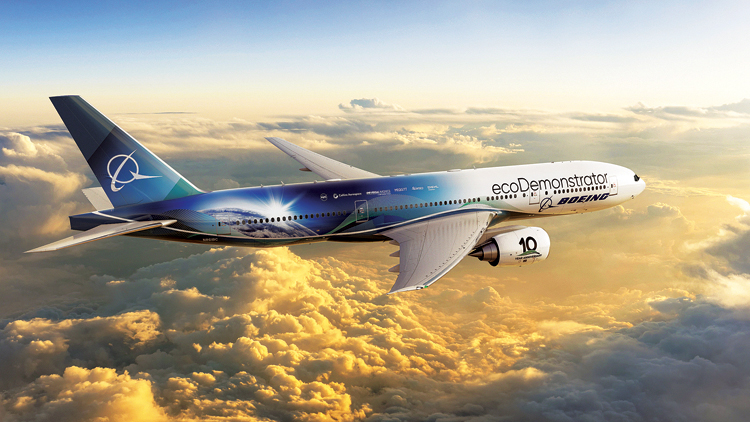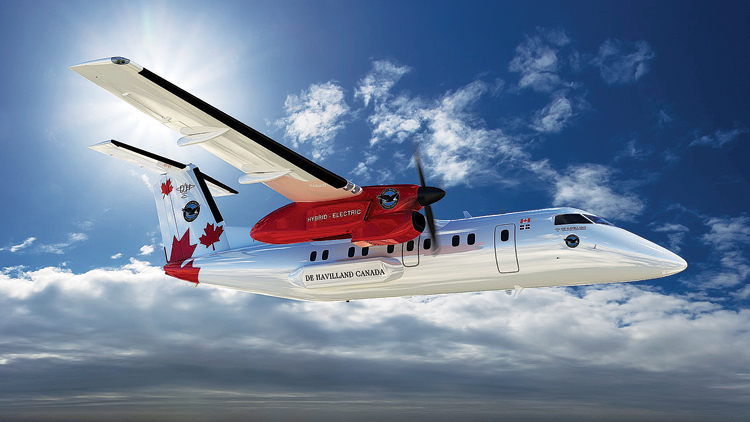Aviation Industry’s Resolve for Greener Future
The aviation industry is committed to reducing its environmental impact through technological developments and operational changes

The aviation industry is one of the most polluting industries in the world, responsible for around two per cent of global greenhouse gas emissions. In 2018, it accounted for 2.4 per cent of global greenhouse gas emissions. However, the industry is committed to reducing its environmental impact and is investing in a number of technologies and initiatives to achieve this goal.
One of the most important initiatives is the development of Sustainable Aviation Fuel (SAF). SAF is made from renewable resources such as biomass and waste, and it does not produce any emissions when it is burned. SAF is still in its early stages of development, but it has the potential to significantly reduce the environmental impact of aviation. In 2021, the global production of SAF was just over 100 million gallons, but this is expected to increase rapidly in the coming years. A number of airlines are already using SAF, and many more are planning to do so in the near future. In 2021, United Airlines became the first major airline to commit to using 100 per cent SAF by 2030. Other airlines that have made similar commitments include American Airlines, Delta Air Lines, and British Airways.
The aviation industry is responsible for around two per cent of global greenhouse gas emissions
Another important initiative is the development of new technologies that can improve the efficiency of aircraft. These technologies include lighter materials, more efficient engines, and better aerodynamics. These technologies can help to reduce the amount of fuel that aircraft use, which will in turn reduce emissions. The aviation industry is also working on a number of other technologies to reduce emissions. These include:
- Air traffic management improvements
- Lightweight materials
- Carbon capture and storage.
In addition to these initiatives, the aviation industry is also working to improve its operational practices. This includes things like reducing taxiing time and optimising flight paths. These changes can also help to reduce emissions. The aviation industry is also working to reduce its environmental impact in other ways. For example, it is working to reduce noise pollution and to protect wildlife. In addition to the technological developments mentioned above, the aviation industry is also working to reduce its emissions through operational changes. For example, airlines are using more efficient aircraft and are investing in new technologies, such as carbon capture and storage. The aviation industry is also working to improve air traffic management systems. This includes developing new technologies that can help to reduce congestion and delays. The aviation industry is also working to develop carbon capture and storage (CCS) technology. CCS is a technology that can be used to capture carbon dioxide from the atmosphere and store it underground. This technology could be used to reduce emissions from aviation.

Despite the rapid and substantial developments towards a greener future, the aviation industry is facing a number of challenges as it moves towards a greener future. These challenges include:
- The cost of new technologies
- The availability of SAF
- The need for international cooperation.
The International Air Transport Association (IATA) has set a goal of halving the industry’s carbon emissions by 2050. IATA is working with its members to develop and implement a number of initiatives to achieve this goal. Following are some of the IATA’s initiatives:
- Investing in SAF: IATA is working with its members to invest in the development and production of SAF. SAF is a key part of the industry’s strategy to reduce emissions.
- Improving Operational Efficiency: IATA is working with its members to improve the operational efficiency of their aircraft. This includes things like reducing taxiing time and optimising flight paths.
- Developing New Technologies: IATA is working with its members to develop new technologies that can help to reduce emissions. These technologies include lighter materials, more efficient engines, and better aerodynamics.
Besides the International Air Transport Association (IATA), there are a number of other organisations that are working to make aviation more sustainable. These include:
- The Air Transport Action Group (ATAG)
- The Sustainable Aviation Fuels Alliance (SAFA)
- The Carbon Neutral Skies Coalition.
These organisations are working to develop standards and policies that will help the aviation industry to reduce its environmental impact.

Here are the top 10 technologies being developed by the aviation industry to reduce carbon emissions:
- Hybrid-electric and Electric Aircraft: Hybrid-electric and electric aircraft are still in the early stages of development, but they have the potential to significantly reduce carbon emissions. Hybrid-electric aircraft use a combination of a traditional jet engine and an electric motor, while electric aircraft use only an electric motor. Both types of aircraft can reduce fuel consumption and emissions by up to 50 per cent.
- Airframe Design: Airframe design is another area where the aviation industry is looking to reduce carbon emissions. New aircraft designs are being developed that are more aerodynamic and lighter, which can lead to improved fuel efficiency.
- Engine Technology: Engine technology is also being improved to reduce carbon emissions. New engine designs, by leading engine manufacturers, are being developed that are more efficient and emit less pollution.
- Aircraft Operations: The way aircraft are operated can also have a significant impact on carbon emissions. Airlines are working to improve operational efficiency by optimising flight routes and reducing weight.
- Carbon Capture and Storage: Carbon capture and storage (CCS) is a technology that can be used to capture carbon dioxide emissions from aircraft. CCS is still in the early stages of development, but it has the potential to significantly reduce the environmental impact of aviation. Leading companies developing CCS technologies include Carbon Engineering, Climeworks, Equinor, Shell and TotalEnergies.
- Sustainable Aviation Biofuels: Sustainable aviation biofuels are made from renewable sources such as biomass and waste. They can reduce carbon emissions by up to 80 per cent compared to traditional jet fuel. Leading companies developing sustainable aviation biofuels include LanzaTech, Amyris, Solazyme, UOP and BP.
- Aircraft Noise Reduction: Aircraft noise is a major environmental concern, especially in densely populated areas. New technologies are being developed to reduce aircraft noise, such as quieter engines and airframe designs.
- Aircraft Emissions Reduction: In addition to carbon dioxide, aircraft emit other pollutants such as nitrogen oxides (NOx) and SulfurOxides (SOx). These pollutants can contribute to air pollution and climate change. New technologies are being developed to reduce aircraft emissions of these pollutants, such as NOx- and SOx-reducing catalysts.
- Aircraft Water Use Reduction: Aircraft use a significant amount of water for aircraft washing, de-icing, and other purposes. New technologies are being developed to reduce aircraft water use, such as waterless aircraft washing and deicing systems.
- Aircraft Waste Reduction: Aircraft generate a significant amount of waste, such as food waste, trash, and human waste. New technologies are being developed to reduce aircraft waste, such as on-board composting systems and waste-toenergy systems.
The industry is committed to reducing its environmental impact by investing in new technologies and operational changes
These are just a few of the many technologies that are being developed by the aviation industry to reduce carbon emissions. By working together, the aviation industry can make a significant impact on the environment and help to ensure a sustainable future for aviation. The aviation sector is making significant progress towards a greener future. However, there is still more work to be done. The industry needs to continue to invest in new technologies and operational changes. It also needs to work with governments and other stakeholders to create a supportive environment for sustainable aviation.
The aviation industry is committed to achieving zero emissions by 2050. This is an ambitious goal, but it is one that the industry is confident it can achieve. With continued investment in research and development, the aviation industry is well on its way to a greener future.





